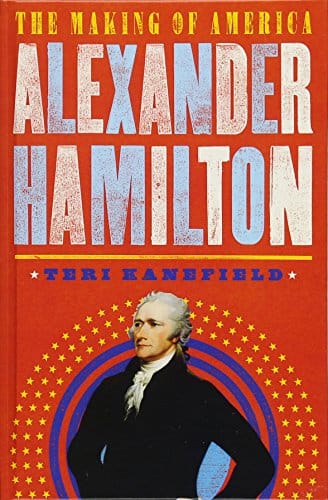Alexander Hamilton: The Relentless Visionary Who Shaped America
Discover how Alexander Hamilton rose from Caribbean orphan to America’s chief financial architect, shaping the Constitution, the Treasury, and modern U.S. governance.

Introduction
Alexander Hamilton’s meteoric rise from an impoverished Caribbean orphan to a principal architect of the United States illustrates the transformative power of intellect, ambition, and unwavering commitment to public service. While his life was cut short in a notorious duel, Hamilton’s economic policies, political writings, and institutional designs continue to influence American governance and finance more than two centuries later.
Early Life in the Caribbean
Born on the island of Nevis in either 1755 or 1757, Hamilton experienced hardship early. Orphaned in his teens, he worked as a clerk for a trading company on St. Croix. The position exposed him to global commerce, currencies, and maritime law—knowledge that would later inform his financial vision for the fledgling United States. A vivid description of a devastating hurricane he penned for a local newspaper impressed island benefactors, who funded his education in the American colonies.
Education and Revolutionary Awakening
Hamilton enrolled at King’s College, now Columbia University, in New York City. There he immersed himself in Enlightenment philosophy and sharpened his rhetorical skills. As tensions between Britain and the colonies escalated, Hamilton’s prolific essays—published under pseudonyms—argued forcefully for colonial rights and self-government. His persuasive writing foreshadowed the compelling prose that would later appear in the Federalist Papers.
Military Service and Leadership
At the outbreak of the Revolutionary War, Hamilton joined a New York artillery unit and quickly earned a reputation for bravery and organizational acumen. His competence caught the attention of General George Washington, who appointed the young captain as his aide-de-camp. For four pivotal years, Hamilton drafted official correspondence, strategic memoranda, and battle orders, effectively serving as Washington’s chief of staff. Seeking frontline glory, he eventually persuaded Washington to grant him a field command and led a decisive assault on British redoubt 10 during the Siege of Yorktown in 1781.
Champion of a Strong Central Government
After the war, a loosely bound confederation of states struggled under crushing war debt, interstate tariffs, and diplomatic weakness. Hamilton perceived the urgent need for a robust national framework. As a delegate to the Constitutional Convention in 1787, he advocated an energetic federal government capable of sustaining national defense, regulating commerce, and promoting economic growth. Although some of his proposals—such as life terms for presidents and senators—were deemed too monarchical, his insistence on centralized authority resonated strongly with key framers.
The Federalist Papers
To persuade skeptical states to ratify the new Constitution, Hamilton collaborated with James Madison and John Jay on a series of essays under the collective pseudonym “Publius.” Hamilton authored 51 of the 85 Federalist Papers, articulating the dangers of faction, the need for separation of powers, and the benefits of a unified republic. These essays remain foundational expositions of American political theory and are frequently cited by jurists and scholars.
First Secretary of the Treasury
In 1789 George Washington, now president, appointed Hamilton the nation’s inaugural Secretary of the Treasury. Facing colossal war debts and a fragile economy, Hamilton devised an ambitious financial system to secure the Republic’s credit and stimulate growth.
Assumption of State Debts
Hamilton proposed that the federal government assume state war debts, thereby binding the states to the national enterprise and establishing federal creditworthiness. The controversial plan passed after a famed compromise that located the permanent capital on the Potomac River.
Creation of a National Bank
The Bank of the United States, modeled partly on the Bank of England, would issue stable currency, manage government funds, and provide loans to spur commerce. Although opponents like Thomas Jefferson decried the bank as unconstitutional, Washington ultimately signed the charter, affirming the doctrine of implied powers.
Manufacturing and Revenue Policies
Hamilton’s Report on Manufactures outlined tariffs, subsidies, and infrastructure improvements to foster domestic industry. He also championed the whiskey excise tax to raise revenue, leading to the Whiskey Rebellion—an early test of federal authority that the government decisively quelled.
Political Rivalries and the Birth of Parties
Hamilton’s vision of a centralized, industrializing nation clashed with Jefferson’s agrarian ideal. Their feud crystallized into the first American party system: Hamiltonian Federalists versus Jeffersonian Democratic-Republicans. The fierce newspaper wars, pamphlets, and legislative battles they waged set enduring precedents for partisan politics.
The Fatal Duel
Hamilton’s uncompromising demeanor bred personal enmities, most notably with Aaron Burr. After Hamilton’s covert efforts thwarted Burr’s political ambitions in the 1804 New York gubernatorial race, Burr challenged him to a duel on the banks of the Hudson River at Weehawken, New Jersey. On July 11, 1804, Burr’s shot mortally wounded Hamilton, who died the following day at the age of 49.
Enduring Legacy
Hamilton’s accomplishments outlived him: the U.S. Mint, a stable currency, a professional Coast Guard, and an enduring system of public credit can all trace their origins to his tenure. His portrait on the ten-dollar bill underscores the financial roots of his legacy.
Resurgence in Popular Culture
The 2015 Broadway musical Hamilton, created by Lin-Manuel Miranda, reintroduced the founding father to millions, blending hip-hop with historical narrative. The show ignited global interest in Hamilton’s writings and policies, drawing new audiences to the study of early American history.
Conclusion
Alexander Hamilton fused visionary economic strategy with eloquent advocacy for constitutional government. From obscure origins to lasting prominence, his life story epitomizes the American dream while his institutional innovations continue to anchor the nation’s fiscal and political stability. Understanding Hamilton is essential to understanding the United States itself.